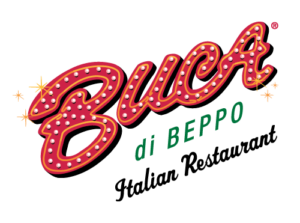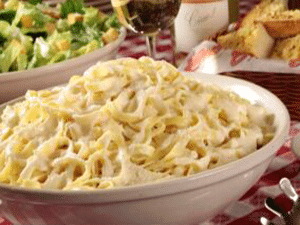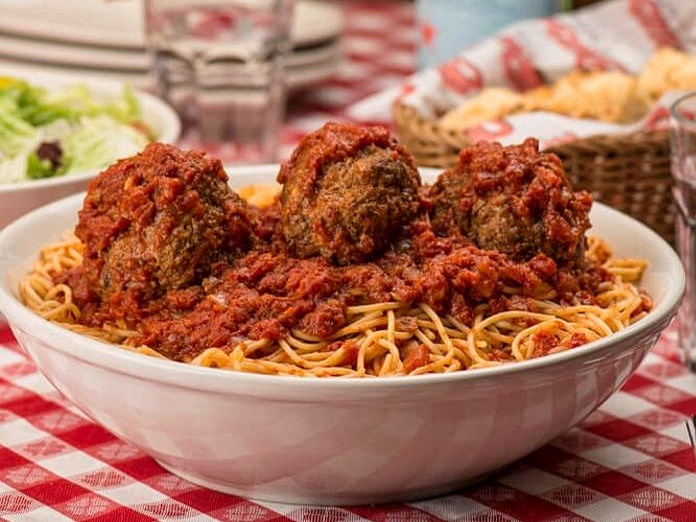Brush up on your pasta ABCs, then come to Buca to taste them all for yourself!
A—al dente: means “to the teeth” in Italian, describing the ideal consistency for pasta—firm, but not hard.
B— bolognese (ragù alla bolognese): is a tomato-based sauce originating from Bologna, Italy, made with ground pork, beef and pancetta.
C—campanelle: means “small bells,” this type of pasta is shaped like a cone with a ruffled edge and a hollow center for capturing sauce.
D—durum wheat: the hard wheat from which Italian pasta and the majority of American dry pastas are made.
E—elbow macaroni: short, curved semicircular tubes of pasta, most popular for macaroni and cheese and macaroni salad.
F—fettuccine: means “small ribbons,” created when flat sheets of pasta are cut into ribbon-shapes. Wider than linguine, this basic noodle pairs well with rich and creamy sauces.
G—gnocchi: Italian for dumplings, gnocchi has been a staple of northern and southern Italian cooking since the early 19th century.
H—homemade: from pasta to salads to desserts, Buca di Beppo always serves up heaping portions of homemade favorites.
I—Italy: pasta is a staple food of traditional Italian cuisine, and loved throughout the world.
J—julienne: julienned vegetables are cut into long, thin strips and are often found in a variety of pasta dishes.
K—vitamin K: pasta is high in vitamin K, an essential nutrient that regulates blood clotting and transports calcium throughout the body.
L—lasagna/lasagne: singular “lasagna” are wide, flat sheets of pasta (possibly one of the oldest types of pasta) and “lasagne” is a layered dish featuring alternated layers of lasagna sheets, sauces, and other ingredients (such as meats and cheeses).
M— manicotti: means “muffs” or “sleeves” in Italian, manicotti are large, tube-shaped noodles.
N—noodles: Noodles can be made of wheat, rice, soybean, potato, a variety of other flours and ingredients. Italian noodles and pastas are always made from durum wheat flour.
O—orecchiette: means “little ears,” orecchiette work well with chunky meat and vegetable sauces.
P—penne: means “quills” or feather pens, these 2-inch straight tubes are cut on the diagonal to resemble the point of a quill.
Q—quadrucci: means “little squares,” this short-cut pasta is often used in soups.
R—ragù: a meat-based sauce created by adding meat to chopped onions, celery, carrots and seasonings and then simmering for a long time with tomato sauce.
S—spaghetti: means “lengths of cord,” this long, thin, round pasta is the number one pasta shape in America.
T—tortellini: small pasta stuffed with a variety of fillings and is also frequently served in Italian soups.
U—utensils: What’s the proper way to eat pasta? A fork and spoon or just a fork? At Buca di Beppo, we never judge, as a matter of fact some of our youngest diners simply use their hands!
V—vermicelli: means “little worms,” this round pasta is slightly thinner than spaghetti but thicker than angel hair.
W—whole grain pasta: whole grain pastas are available in brown rice, kamut, quinoa, soba (buckwheat), and spelt, and whole wheat.
X—X-shaped: farfalle pasta is described as x-shaped or bow-shaped.
Y—yeast: a necessary ingredient in Buca’s mouthwatering homemade bread, the perfect accompaniment to any pasta dish.
Z—ziti: means “bridegrooms,” in Italian vernacular, baked ziti is traditionally served at wedding banquets.
Pick your favorite from A to Z and celebrate National Pasta Day on October 17! At Buca we celebrate Pasta every day of the year!
Make Reservations for National Pasta Day Here.



